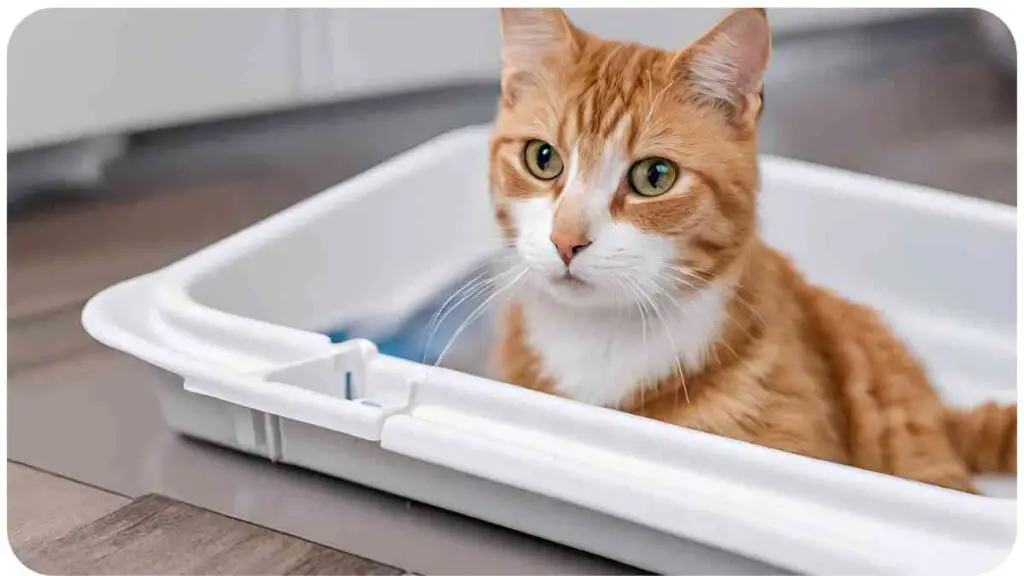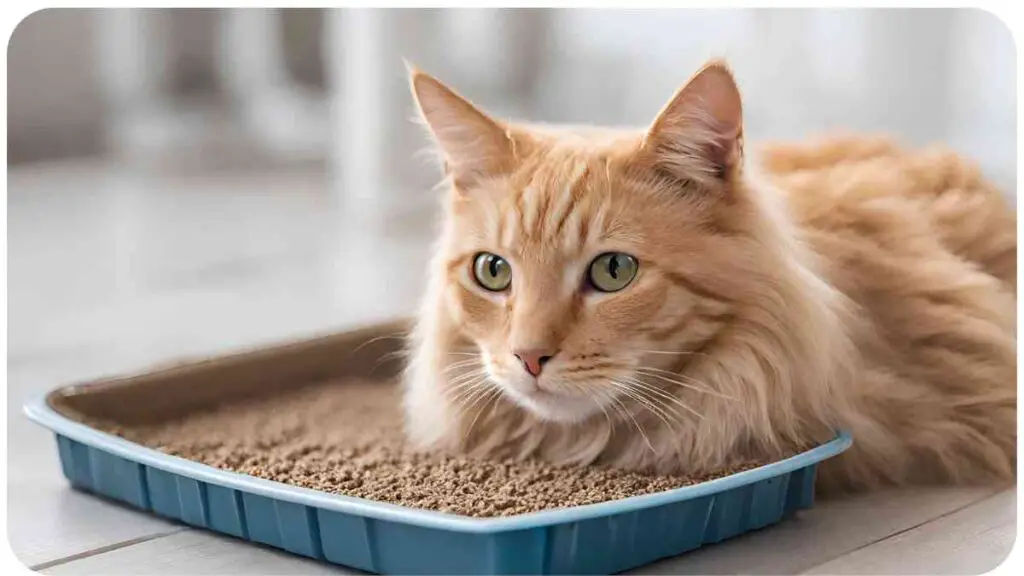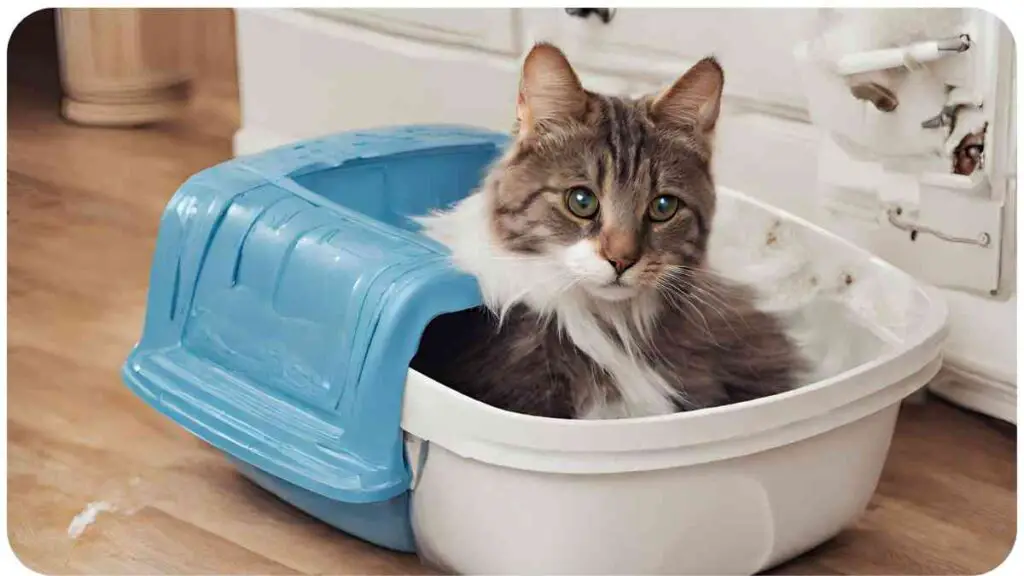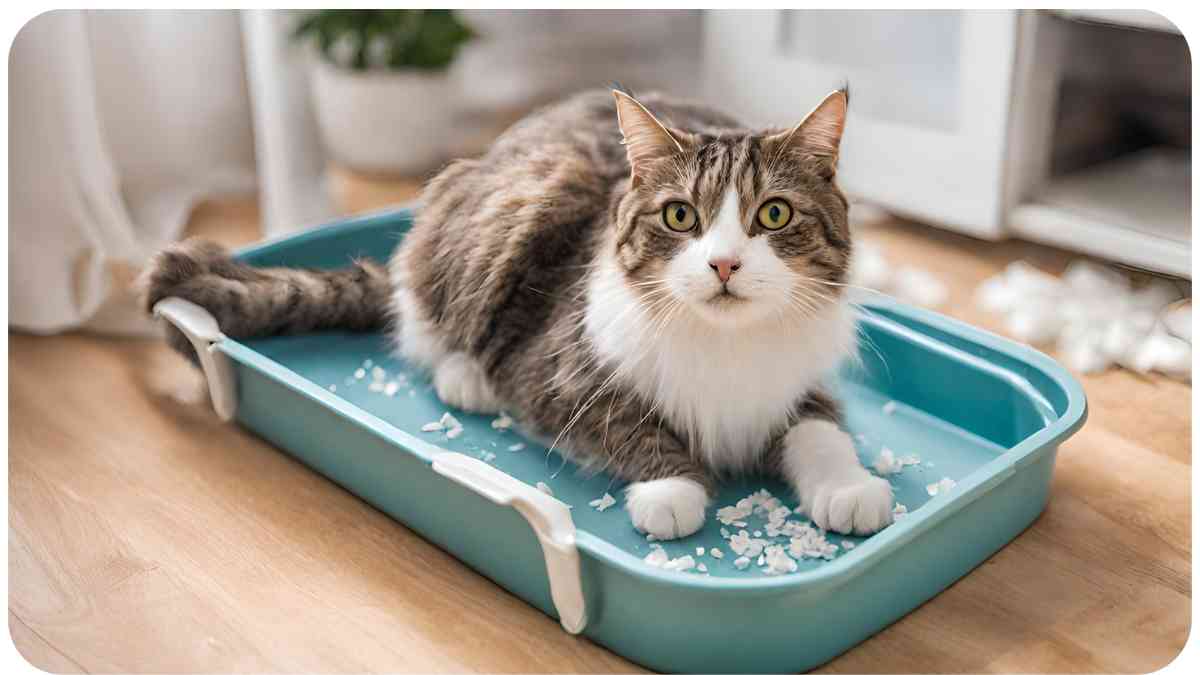Cat owners understand the importance of maintaining a clean litter box for their feline companions. With the advent of automatic self-cleaning litter boxes like LitterMaid, the task has become significantly easier.
However, one question that often arises is, “How often should you change the tray in your LitterMaid?” In this article, we’ll delve into this query, providing insights, expert recommendations, and practical tips for keeping your LitterMaid clean and efficient.
| Takeaway |
|---|
| Regular tray changes are essential for maintaining a clean and hygienic environment for your cat. |
| Signs indicating the need for a tray change include persistent odor, excessive clumping, visible residue, and decreased scooping efficiency. |
| Factors influencing tray change frequency include the number of cats, litter type, cat’s health, and climate. |
| Steps to change the LitterMaid tray involve turning off the unit, disposing of waste, cleaning the tray, replacing liners (if applicable), refilling with litter, and restarting the unit. |
| Choosing the right litter is crucial for optimal LitterMaid performance, considering factors like clumping ability, dust levels, and scent. |
| Tips for maintaining LitterMaid cleanliness include regular maintenance, monitoring litter levels, inspecting components, and providing adequate ventilation. |
2. Understanding LitterMaid Trays

Before diving into the frequency of tray changes, let’s understand the mechanics of LitterMaid trays. These trays serve as the collection point for clumped waste and litter, which are then automatically scooped and deposited into a waste receptacle. Typically, these trays are lined with disposable waste receptacles or can be used with reusable liners.
Facing issues with your Furbo dog camera setup? Don’t fret! Our troubleshooting guide tips and connectivity solutions provides step-by-step assistance to ensure seamless operation.
Table 1: Comparison of LitterMaid Tray Types
| Tray Type | Description | Pros | Cons |
|---|---|---|---|
| Disposable | Convenient, no cleaning required | Added ongoing cost | Generates plastic waste |
| Reusable Liners | Environmentally friendly, cost-effective option | Requires cleaning between uses | Initial investment in liners and cleaning |
3. Importance of Regular Tray Changes
Regular tray changes are crucial for maintaining a clean and hygienic environment for your cat. Accumulated waste can lead to unpleasant odors, bacterial growth, and discomfort for your pet. Additionally, a dirty tray may deter your cat from using the litter box, leading to accidents elsewhere in the home.
Table 2: Benefits of Regular Tray Changes
| Benefits | Description |
|---|---|
| Odor Control | Minimizes unpleasant smells associated with waste accumulation |
| Hygiene Maintenance | Reduces bacterial growth and potential health risks for both cats and humans |
| Cat Comfort | Ensures a clean and inviting litter box environment, encouraging regular use by your cat |
4. Signs It’s Time to Change the Tray

Determining the right time to change the tray involves observing certain indicators. While the frequency may vary depending on factors like the number of cats and the type of litter used, the following signs generally indicate that a tray change is due:
- Persistent Odor: If the litter box begins to emit a strong, persistent odor despite regular scooping, it’s a clear sign that the tray needs changing.
- Excessive Clumping: Clumped waste that accumulates at a faster rate than usual indicates that the tray is reaching its capacity.
- Visible Residue: When the bottom of the tray shows visible residue or discoloration, it’s time for a thorough cleaning or replacement.
- Decreased Scooping Efficiency: If the LitterMaid’s scooping mechanism starts to struggle or becomes less effective, it may be due to an overloaded or dirty tray.
Wondering about the maintenance of your cat’s water fountain? Discover the importance of regularly changing filters in our guide: filters in a cat water fountain.
5. Factors Influencing Tray Change Frequency
Several factors influence how often you should change the tray in your LitterMaid:
Table 3: Factors Influencing Tray Change Frequency
| Factors | Description |
|---|---|
| Number of Cats | Homes with multiple cats will require more frequent tray changes to accommodate increased waste production. |
| Litter Type | Some litter varieties clump more effectively than others, affecting how quickly waste accumulates in the tray. |
| Cat’s Health | Cats with gastrointestinal issues or urinary tract problems may produce more waste or require more frequent litter box maintenance. |
| Climate and Humidity | High humidity levels can accelerate the breakdown of clumped waste and contribute to odor buildup, necessitating more frequent tray changes. |
6. Steps to Change LitterMaid Tray
Changing the tray in your LitterMaid is a straightforward process that can be completed in a few simple steps:
- Turn Off the Unit: Before beginning the tray change, ensure that the LitterMaid is turned off and unplugged to prevent any accidents.
- Dispose of Waste: Remove the waste receptacle or liner containing the accumulated waste and dispose of it in a sealed bag.
- Clean the Tray: Use mild soap and water to clean the tray thoroughly, ensuring all residue is removed. For reusable liners, follow the manufacturer’s instructions for cleaning.
- Replace Liner (if applicable): If using disposable liners, insert a new one into the tray according to the manufacturer’s guidelines.
- Refill with Litter: Add fresh litter to the tray, ensuring it is at the recommended depth for optimal performance.
- Restart the Unit: Once the tray has been changed and refilled, plug in the LitterMaid and resume normal operation.
7. Choosing the Right Litter for Your LitterMaid
Selecting the appropriate litter is essential for maintaining the efficiency and longevity of your LitterMaid. Consider the following factors when choosing a litter:
- Clumping Ability: Opt for a litter that forms strong, easy-to-scoop clumps to facilitate the automatic cleaning process.
- Dust Levels: Low-dust litters are preferable to minimize respiratory irritation for both cats and humans.
- Scent: Choose a litter with a mild or neutral scent to avoid overwhelming odors, especially in enclosed spaces.
Maintaining your dog’s diet is crucial. Learn how to adjust portion sizes effortlessly with our Neater Feeder guide: Neater Feeder: Adjusting portion sizes.
Table 4: Popular Litter Types for LitterMaid
| Litter Type | Description | Pros | Cons |
|---|---|---|---|
| Clumping Clay | Traditional option, effective clumping properties | Widely available, affordable | Dusty, may track outside litter box |
| Silica Gel | Low-dust, excellent odor control | Absorbs moisture, long-lasting | Higher initial cost, may not clump as well |
| Natural Pine | Environmentally friendly, natural odor control | Biodegradable, minimal dust | Scent may not appeal to all cats |
8. Tips for Maintaining LitterMaid Cleanliness

To ensure optimal performance and cleanliness of your LitterMaid, consider implementing the following tips:
- Regular Maintenance: Schedule regular tray changes and cleanings to prevent waste buildup and maintain efficiency.
- Monitor Litter Level: Keep an eye on the litter level and refill as needed to ensure proper operation of the LitterMaid.
- Inspect Components: Periodically inspect the LitterMaid’s components for any signs of wear or damage, replacing as necessary to prevent malfunctions.
- Provide Adequate Ventilation: Place the litter box in a well-ventilated area to minimize odor accumulation and
Is your automatic dog water dispenser causing leaks? Find out why and how to fix it in our informative guide: automatic dog water dispenser might be leaking.
9. Common Mistakes to Avoid
While maintaining your LitterMaid, steer clear of these common pitfalls:
- Neglecting Regular Cleaning: Failing to change the tray or clean the unit regularly can lead to odor buildup, reduced efficiency, and potential health hazards.
- Overfilling the Tray: Adding too much litter to the tray can overwhelm the LitterMaid’s scooping mechanism, leading to clogs and malfunctions.
- Using Incorrect Litter: Not all litters are suitable for use with automatic litter boxes like LitterMaid. Avoid using non-clumping or excessively dusty litters.
- Ignoring Warning Signs: Address any issues promptly, such as unusual noises, decreased scooping efficiency, or error messages on the unit’s display.
Confused by blinking lights on your Petkit water fountain? Decode the signals with our comprehensive explanation: blinking lights on your Petkit water fountain.
10. Expert Recommendations
Veterinarians and pet care experts offer valuable insights into maintaining a clean litter box environment:
Table 5: Expert Recommendations for Litter Box Maintenance
| Expert | Advice |
|---|---|
| Dr. Sarah Johnson | “Regular tray changes are essential for preventing bacterial growth and maintaining your cat’s health. Aim for at least once a week, more frequently for multiple-cat households.” |
| Jackson Galaxy | “Keep an eye on your cat’s litter box habits. Changes in behavior, such as avoiding the litter box or straining to urinate, may indicate underlying health issues requiring veterinary attention.” |
11. FAQs about LitterMaid Trays
Here are some frequently asked questions about LitterMaid trays:
Table 6: FAQs about LitterMaid Trays
| Question | Answer |
|---|---|
| How often should I change the tray? | The frequency of tray changes depends on factors like the number of cats, litter type, and environmental conditions. Aim for at least once a week for optimal cleanliness. |
| Can I use any type of litter with LitterMaid? | While LitterMaid is compatible with most clumping litters, it’s best to avoid non-clumping or excessively dusty varieties, as they may affect performance. |
| Why is my LitterMaid not scooping properly? | Check for any obstructions in the tray or malfunctioning components. Ensure the litter level is within the recommended range and that the unit is placed on a level surface. |
12. Conclusion
Maintaining a clean litter box is essential for your cat’s health and well-being, as well as for your own comfort. With LitterMaid’s automatic cleaning technology, the task becomes more manageable, but it’s crucial to adhere to a regular maintenance schedule.
By understanding the signs that indicate the need for a tray change, choosing the right litter, and following expert recommendations, you can ensure a clean and inviting environment for your feline friend. Remember, a happy cat means a happy home!
In conclusion, proper maintenance of your LitterMaid tray, including regular cleaning and timely replacements, is key to ensuring a hygienic and odor-free litter box environment. By following the tips and recommendations outlined in this article, you can enjoy the convenience of an automatic litter box while providing the best care for your beloved feline companion.
Further Reading
For more detailed information on LitterMaid tray maintenance and usage, consider exploring the following resources:
- LitterMaid User Manual (PDF): This comprehensive user manual provides step-by-step instructions for setting up and maintaining LitterMaid automatic litter boxes.
- LitterMaid Official Website: Visit the official LitterMaid website to explore their range of litter boxes and accessories, along with helpful tips and FAQs.
- cats.com – How Often Should You Change Cat Litter: This informative article offers insights into the frequency of litter changes for cat owners, addressing common concerns and providing practical tips.
FAQs
How often should I change the tray in my LitterMaid?
- Answer: The frequency of tray changes depends on various factors such as the number of cats, litter type, and the LitterMaid model you’re using. Generally, it’s recommended to change the tray every 1-2 weeks for optimal cleanliness and performance.
Can I use any type of litter with my LitterMaid?
- Answer: While LitterMaid is compatible with most clumping litters, it’s essential to choose a litter that clumps well and is low in dust. Avoid using non-clumping or overly dusty litters, as they may affect the LitterMaid’s efficiency.
How do I clean my LitterMaid tray?
- Answer: To clean the tray, first, turn off and unplug the unit. Dispose of the waste receptacle or liner, clean the tray with mild soap and water, and replace with a fresh liner or clean tray. Refer to the user manual for detailed instructions.
My LitterMaid seems to be struggling to scoop properly. What could be the issue?
- Answer: If your LitterMaid is experiencing scooping issues, it may be due to an overloaded or dirty tray, a malfunctioning sensor, or mechanical issues. Try cleaning the tray thoroughly and checking for any visible obstructions before contacting customer support for further assistance.
Is there a specific type of litter that works best with LitterMaid?
- Answer: LitterMaid typically works well with clumping clay, silica gel, or natural pine litter. Choose a litter that forms strong clumps, controls odors effectively, and is low in dust to ensure optimal performance and cleanliness.

I’m Dr. Hellen James, a professional veterinarian with a deep interest in the ways that litter size affects the health of animals. I’ve spent years studying this subject and performing research on reproduction in many different kinds of creatures.

